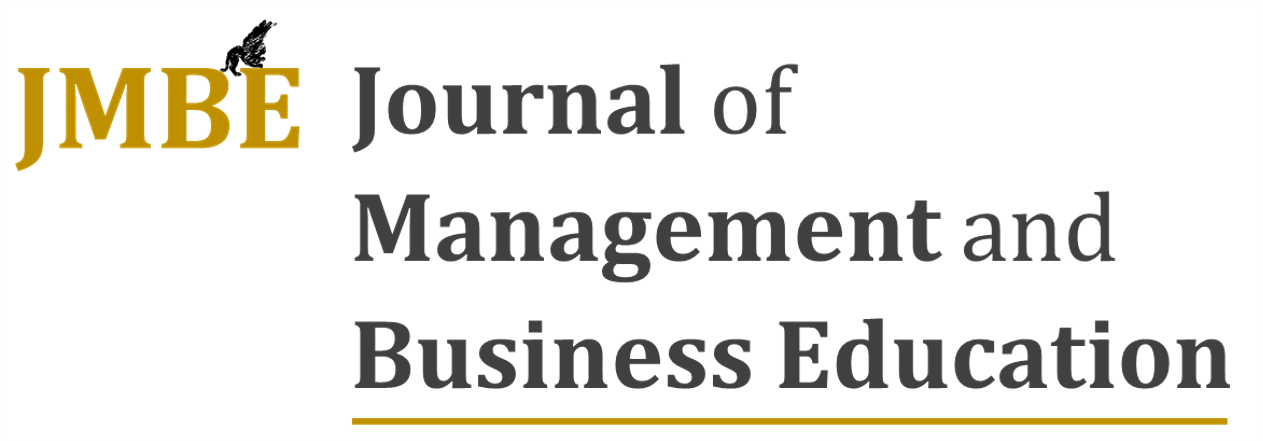Teaching case. Gamification in higher education: turning training in face-to-face and online studies
DOI:
https://doi.org/10.35564/jmbe.2022.0017Keywords:
Gamification, higher education, active methodologies, Kahoot!, flipped classroom, e-learningAbstract
The profile of university students has changed in recent years. The use of the Internet and social networks has fostered immediacy in everyday life. Added to this is the fact that in recent years the number of students known as “sisi” generation has increased, that is, students who study and work at the same time. For this student profile, not only is a master class enough, but, given the effort they make to be able to train -in person or online (e-learning)- we must, at least, take into account different techniques or tools that can help encourage participation, motivate students and facilitate the acquisition and assimilation of the knowledge exposed in the training sessions. In this line, we present a teaching case in which gamification tools applicable to education were used in order to report an experience that makes the use of this type of programs or gamification techniques to be valued and taken as a reference when teaching. in a context of higher education both in the face-to-face environment and in the online environment. In the present study, the experience of applying gamification tools or techniques, both in face-to-face studies and in online studies, has been satisfactory for the students and, as they indicate, has helped them in their learning. In line with other authors, our didactic case corroborates the results of the improvement in the understanding and learning of students in higher education.
Downloads
References
Almonte, M.G. y Bravo, J. (2016). Gamificación y e-learning: estudio de un contexto universitario para la adecuación de su diseño. Revista Tecnología, Ciencia y Educación, 4, 52–60. https://doi.org/10.51302/tce.2016.78
Alshahrani, S., Ahmed, E. y Ward, R. (2017). The influence of online resources on student–lecturer relationship in higher education: a comparison study, Journal of Computers in Education, 4(2), 87-106. https://doi.org/10.1007/s40692-017-0083-8
Barro, S. y Uceda, J. (2006). Las TIC en el Sistema Universitario Español: un análisis estratégico. Madrid: CRUE Universidades Españolas.
Bigné, E., Badenes, A., Ruiz, C. y Andreu, L. (2019). Development of a blended course for online teaching: process and outcomes. Journal of Management and Business Education, 2(2), 108-126. https://doi.org/10.35564/jmbe.2019.0010
Boude, O. (2017). Estrategias de aprendizaje para formar en Educación Superior a una generación interactiva. Educación Médica Superior, 31(2).
Cabero, J. y Gisbert, M. (2005). Formación en Internet. Guía para el diseño de materiales didácticos, MAD, Sevilla.
Calvo, V. y López, M.I. (2021). University classroom gamification: a “reverse escape room” experience. REDU. Revista de Docencia Universitaria, 19(1), 45-74. https://doi.org/10.4995/redu.2021.15666
Caridad, E., Fernández, P. y Mantiñán, C. (2019). Una experiencia de flipped classroom aplicada a la docencia del Dibujo de Arquitectura. En E. de la Torre Fernández (Ed.), Contextos universitarios transformadores: construíndo espazos de aprendizaxe (pp. 149-160). Cufie. Universidade da Coruña. A Coruña: III Xornadas de Innovación Docente.
Carrasco, A.J., Lozano, G., Lucas, M.E., Madrid, M.F. y Sánchez, G. (2020). Developing new learning tools in the classroom: the Kahoot experience. Journal of Management and Business Education, 3(3), 214-235. https://doi.org/10.35564/jmbe.2020.001
COPE (2021). Generación 'sisi': 5 de cada 10 estudiantes sí estudian y sí trabajan. Disponible en: https://www.cope.es/actualidad/sociedad/audios/generacion-sisi-cada-estudiantes-estudian-trabajan-20210705_1514996 [Consulta: 01/06/2022]
Cortizo, J. C., Carrero, F., Monsalve, B., Velasco, A., Díaz del Dedo, L. I. y Pérez Martín, J. (2011). Gamificación y Docencia: Lo que la Universidad tiene que aprender de los Videojuegos. En M. J. García García y E. Icarán (coords.), VIII Jornadas internacionales de innovación universitaria. Madrid: Universidad Europea de Madrid.
Csikszentmihalyi, M. (1975). Beyond boredom and anxiety. San Francisco, CA: Jossey-Bass.
Csikszentmihalyi, M. (1990). Flow: The psychology of optimal experience. Nueva York, NY: Harper and Row.
Contreras, R.S. y Eguía, J.L. (2017). Experiencia de Gamificación en las aulas. Instituto de la Comunicación, Universitat Autònoma de Barcelona
De la Hoz, E., Martínez, O., Cómbita, H. y Hernández, H. (2019). Las Tecnologías de la Información y la Comunicación y su Influencia en la Transformación de la Educación Superior en Colombia para Impulso de la Economía Global. Información Tecnológica, 30(1), 255-262. doi: https://dx.doi.org/10.4067/S0718-07642019000100255
Del Castillo, Á. (2021). Teaching experience in the social media manager course in a situation of confinement by COVID-19. Journal of Management and Business Education, 4(3), 322-337. https://doi.org/10.35564/jmbe.2021.0019
Del Moral, M.E. (2014). Advergames & Edutainment: Fórmulas creativas para aprender jugando. En Revuelta, F., Fernández, M.R., Pedrera, M.I. & Valverde, J. (coords.). Ponencia Inaugural del II Congreso Internacional de Videojuegos y Educación (CIVE 2013), 1-3 de octubre 2013. (pp. 13-24). Cáceres: Universidad de Extremadura.
Delors, J. (1996). Los cuatro pilares de la educación. En La educación encierra un tesoro. Informe a la UNESCO de la Comisión internacional sobre la educación para el siglo XXI, Madrid, España: Santillana/UNESCO, 91-103. Disponible en https://uom.uib.cat/digitalAssets/221/221918_9.pdf
Díaz, J. y Troyano, Y. (2013). El potencial de la gamificación aplicado al ámbito educativo. En III Jornadas de Innovación Docente. Innovación Educativa: respuesta en tiempos de incertidumbre Sevilla, España: Universidad de Sevilla. Facultad de Ciencias de la Educación. Disponible en https://idus.us.es/handle/11441/59067
Díez, J. C., Bañeres, D. y Serra, M. (2017). Experiencia de gamificación en Secundaria en el Aprendizaje de Sistemas Digitales. Education in the Knowledge Society, 18(2), 85-105. Disponible en https://redined.educacion.gob.es/xmlui/handle/11162/140943
Ermi, L. y Mäyrä, F. (2005). Player-Centred Game Design: Experiences in Using Scenario Study to Inform Mobile Game Design. Game Studies, 5(1).
Espinosa, T., Solano, I. y Veit, E. A. (2018). Aula invertida (flipped classroom): innovando las clases de física. Revista de enseñanza de la Física, 30(2), 59-73.
Fitz, Z., Tjondronegoro, D. y Wyeth, P. (2011). Orientation passport: using gamification to engage university students. In Proceedings of the 23rd Australian Computer-Human Interaction Conference (pp. 122-125). ACM.
Generación dos punto cero (2017). La generación “sisi”: “sí” estudian, “sí” trabajan. Disponible en http://generaciondospuntocero.com/la-generacion-sisi-si-estudian-si-trabajan [Consulta: 08/07/2022]
Gil, I. y Domínguez, D. (2018). Teachers’ roles in light of massive open online courses (MOOCs): Evolution and challenges in higher distance education, International Review of Education, 64(2), 197-219. https://doi.org/10.1007/s11159-018-9715-0
Glover, I. (2013). Play as you learn: gamification as a technique for motivating learners. Proceedings of World Conference on Educational Multimedia, Hypermedia and Telecommunications 2013, AACE, Chesapeake (VA), 1999-2008. ISBN: 9781939797032.
Iwamoto, D.H., Hargis, J., Taitano, E.J., y Voung, K. (2017). Analyzing the efficacy of the testing effect using Kahoot on student performance. The Turkish Online Journal of Distance Education, 18(2), 80-93. https://doi.org/10.17718/tojde.306561
Kapp, K. (2012). The Gamification of Learning and Instruction: Game-Based Methods and Strategies for Training and Education. San Francisco: John Wiley & Sons.
Lee, J., Ceyhan, P., Jordan-Cooley, W. y Sung, W. (2013). GREENIFY: A Real-World Action Game for Climate Change Education. Simulation & Gaming, 44(2-3), 349-365.
Lee J. y Hammer J. (2011) Gamification in Education: What, How, Why Bother? Academic Exchange Quarterly, 15(2), 146-151. Disponible en http://www.gamifyingeducation.org/files/Lee-Hammer-AEQ-2011.pdf
Llagostera, E. (2012). On gamification and persuasion. Proceedings of the SBGames, Rio de Janeiro, Brazil, 2-4.
López, D. M., Castro, G. F., Ruiz, N. C. y Martillo, I. A. (2020). Implementación de flipped classroom enfocado a los estudiantes de ingeniería de software: caso universidad ecuatoriana. ECOCIENCIA, 7(3), 1-19
Magadán, M., Rivas, J. I. (2022). Gamificación del aula en la enseñanza superior online: el uso de Kahoot. Campus Virtuales, 11(1), 137-152. https://doi.org/10.54988/cv.2022.1.978
Marcelo, C. y Lavié, J.M. (2000). Formación y Nuevas Tecnologías: Posibilidades y condiciones de la teleformación como espacio de aprendizaje. Bordón, 52(3), 385-406.
Marqués, M. (2016). Qué hay detrás de la clase al revés (flipped clasroom). Revista de Investigación en Docencia Universitaria, 9(3).
McIsaac, M.S. y Gunawardena, C.N. (1996). Distance Education. En Jonassen. D.H. (1996), Handbook on Research for Educational Communications and Technology, McMillan, Nueva York, 403-437.
Molesworth, M. (2006). Real brands in imaginary worlds: investigating players´experiences of brand placement in digital games. Journal of Consumer Behaviour, 5(4), 355–366.
O'Donovan, S., Gain, J. y Marais, P. (2013). A case study in the gamification of a university-level games development course, Proceedings of the South African Institute for Computer Scientists and Information Technologists Conference, 242-251.
Pelegrín, J., Sierra, Y., Olarte, C. y García, A. (2020). Game of thrones in class. Effect of gamification on amotivation and perceived quality. Journal of Management and Business Education, 3(1), 72-89. https://doi.org/10.35564/jmbe.2020.0006
Prieto, A., Díaz, D., Monserrat, J. y Reyes, E. (2014). Experiencias de aplicación de estrategias de gamificación a entornos de aprendizaje universitario. ReVisión, 7(2). Disponible en http://www.aenui.net/ojs/index.php?journal=revision&page=article&op=viewArticle&path[]=149&path[]=243 [Consulta: 28/05/2022]
Rubio, M. J. (2003). Enfoques y modelos de evaluación del e-learning. RELIEVE, 9(2), 101-120. Disponible en: https://www.fceia.unr.edu.ar/geii/maestria/2013/Dra.Roig/U3%20Rubio_ev_educacion_virtual.pdf
Schwarz, B.B. y Asterhan, C.S. (2011). E-moderation of synchronous discussions in educational settings: A nascent practice, Journal of the Learning Sciences, 20(3), 395-442. https://doi.org/10.1080/10508406.2011.553257
Tiffin, J. y Rajasingham, L. (1997). En busca de la clase virtual. La educación en la sociedad de la información. Editorial Paidós, Barcelona.
Vallet, I., Vallet, T., Zubiría, E., Martínez, T. y Bel, I. (2019). Un estudio comparativo entre dos herramientas de respuesta de audiencia en las aulas universitarias. Revista Perspectiva Empresarial, 6(1), 61-73. https://doi.org/10.16967/23898186.223
Vargas, J., Chiroque, E. y Vega, M. (2016). Innovación en la docencia universitaria: una propuesta de trabajo interdisciplinario y colaborativo en educación superior. Educación, 25(48), 67-84. doi: https://dx.doi.org/10.18800/educacion.201601.004
Villalustre, L. y del Moral, M.E. (2015). Gamificación: Estrategia para optimizar el proceso de aprendizaje y la adquisición de competencias en contextos universitarios. Digital Education Review, 27, junio, 13-31. http://dx.doi.org/10.1344/der.2015.27.13-31
Webster, J., Trevino, L. K. y Ryan, L. (1993). The dimensionality and correlates of flow in human-computer interaction. Computers in Human Behavior, 9, 411–426. https://doi.org/10.1016/0747-5632(93)90032-N
Downloads
Published
How to Cite
Issue
Section
License
Copyright (c) 2023 Journal of Management and Business Education

This work is licensed under a Creative Commons Attribution-NonCommercial-ShareAlike 4.0 International License.
License terms at: https://creativecommons.org/licenses/by-nc/4.0/legalcode




